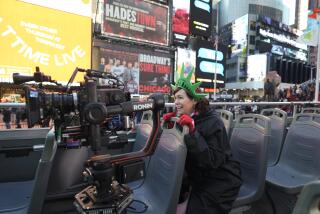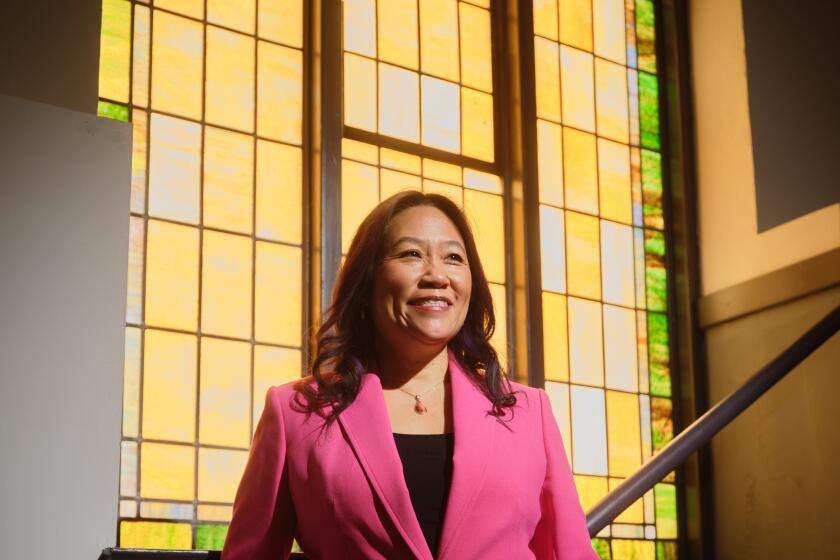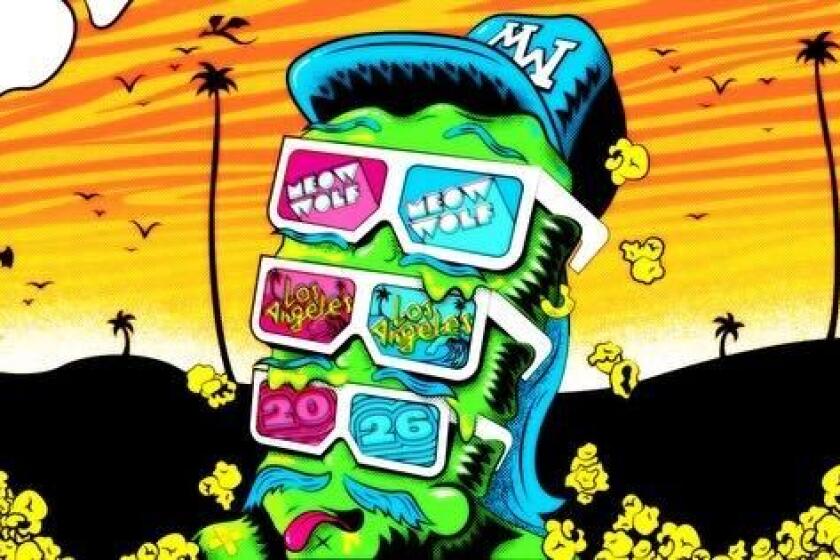An Innovative, Consistent Cunningham
So much of Merce Cunningham’s choreography is marked by conceptual or technological experiment--attempting to reorder the way we watch and think about dance--that it’s easy to overlook the evidence that marks him as an arch-conservative.
The three Los Angeles premieres presented by the Cunningham ensemble at Royce Hall, UCLA, on Thursday may have defined a new plateau of innovation for the 72-year-old choreographer, but they also revealed anew his near-reactionary dependence on unanimity of style, technical finesse, grace.
If his work invariably challenges the mind and assaults the ear, it positively soothes the eye with its pervasive lyricism. Even when we can’t figure out his battle plan, his company offers an idealized vision of human movement that proves deeply involving.
In “Polarity,” for example, Cunningham offers a kind of dialogue between action and stillness, with a large group of dancers in motion contrasted with a few (sometimes only one) standing nearly motionless--slowly rotating a single foot, perhaps.
The dancers wear metallic strips on their loose tops and these create electronic interference with the radar and ultrasonic signals beamed from behind the backdrop. Composer David Tudor manipulates these signals into a soundscore: “Virtual Focus,” a vaguely ominous rumbling, bubbling and sometimes rasping accompaniment created on the spot.
However complicated, intellectual or futuristic all this may seem, what you actually see is a game, with everyone moving and everyone freezing, sooner or later. The movement itself looks typically inventive--never more so than in a double duet where the men support the women’s extensions by holding their wrists and ankles, functioning almost like Bunraku puppeteers. But, as always, the partnering remains as suave and tender as in the most antique ballet adagios.
In “Inventions,” Cunningham assigns his dancers 64 separate dance-phrases, each a skillful minidance in itself. Sometimes those phrases expand--from a solo to a group statement, for instance--but development and continuity are deliberately abandoned for a cavalcade of movement themes: idea after idea presented in isolation, nonstop.
John Cage’s “Sculptures Musicales” imposes its own conditions on the performance, introducing deafening blasts of electronic sound from time to time and then letting the dance proceed in silence. If the brief dance-phrases seem to rush by, the accompaniment radically slows the concept of rhythm by placing each “beat” minutes apart.
Cunningham himself appears in “Trackers,” initially aloof yet eventually joining one of the clusters that emerge as the predominant movement theme of the work. These clusters usually link dancers on the floor with those at sitting and standing heights--though traveling and lifting clusters also occur. In contrast to these dense quasi-architectural units, individual dancers and small groups move in free space, their arms often held high, out from the body, in a linear statement.
Emanuel Dimas de Melo Pimenta’s “Gravitational Sounds” continually bathes the dance in electronic washes. As opposed to the bold theatricalism of “Polarity” (with its whimsical backdrop by Cunningham and Bill Anastasi) or “Inventions” (with its bold color permutations), the stage here stays dark, the costuming random, the accompaniment subdued.
However, “Trackers” is anything but low-tech. Cunningham choreographed about a third of it using computer animation--specifically the Life Forms software developed at Simon Fraser University, Vancouver. And though it’s pure guesswork determining what he created using the computer screen versus the normal company rehearsal process, “Trackers” does periodically disassociate dancers’ arms from the rest of their bodies in striking and unusual ways.
Simultaneity has long been a Cunningham priority. But where the stage used to hold competing choreographic events, suddenly the individual Cunningham dancer has become a locus of simultaneity, moving with a double impetus, a bifocal virtuosity.
During all his celebrated breakthroughs in dance perception and methods of composition, Cunningham pretty much left the body alone, evolving an elegant, comprehensive technique that scarcely anyone would call revolutionary. Now, however, inspired by computer graphics, he seems to be at the edge of a new frontier.
More to Read
The biggest entertainment stories
Get our big stories about Hollywood, film, television, music, arts, culture and more right in your inbox as soon as they publish.
You may occasionally receive promotional content from the Los Angeles Times.






